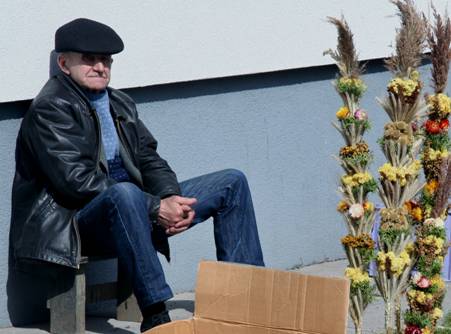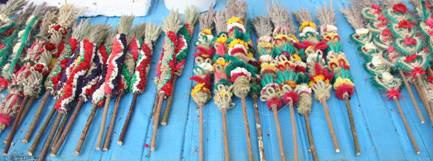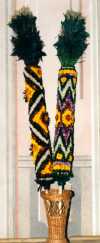
THE VOICE OF INTERNATIONAL LITHUANIA
|
VilNews has its own Google archive! Type a word in the above search box to find any article.
You can also follow us on Facebook. We have two different pages. Click to open and join.
|

The Christian world celebrates Jesus' noble entry into Jerusalem on the last Sunday before Easter. In Lithuania this day is called Verbų Sekmadienis – Palm Sunday. When Christianity came to Lithuania, plants which sprouted earliest were honoured during spring feasts. Even now, willows, osiers and weeping willows are consecrated on Palm Sunday. Mythological folklore relates that one of the willows, called Blindė, had been a very fertile woman, bearing numerous children. Earth, the most fertile mother was jealous of her. When Blindė walked through a wetfield, her feet sank into the mud. Blindė turned into a willow tree out of great sadness.
The osier, with male spores was regarded as an unusual tree. Folklore tells that the osier grew out of a secretly murdered man. A fife made of osier wood, speaks in a man's voice. Evil spirits avoid it because of its red color.
Palms of Vilnius (Verbos)

These decorative, dried plant bouquets had no ritual purpose earlier. However now with the addition of juniper and osier branches they have become Palm Sunday tokens. The Vilnius' palm is today produced in fifteen villages in the Vilnius region.
Painters were among the first to show interest in palms. In 1847 K.Ruseckas painted a young girl with a bunch of palms in her hands and in 1913 he presented palms in colorful folk art and trade show posters. The origin of Palms of Vilnius has not been determined. It is thought that they could have been ancient Vilnius trade guilds' processional adornments, manufactured mimicking Jesus' entry into Jerusalem. Vilnius' Palms are created using dried wild plants, forest and garden blossoms and other plant parts. About thirty different plants are used, among them are mosses, berry greens, timothy grass, St. John's worth, tansy, yarrow and many others.
The making of palms begins the day after Shrove Tuesday and continues till Palm Sunday. This is a project that involves the entire family, however most often it is women's work. The most popular palms are roller shaped. Now there are wreath and whip shaped, flat and puffed out.
 |
PALM SUNDAY PALMS [ a.k.a. VERBOS ]
The Christian world celebrates Jesus' noble entry into Jerusalem on the last Sunday befor Easter. In Lithuania this day is called Verbø Sekmadienis – Palm Sunday. When Christianity came to Lithuania, plants which sprouted earliest were honored during spring feasts. Even now, willows, osiers and weeping willows are consecrated on Palm Sunday. Mythological folklore relates that one of the willows, called Blindë, had been a very fertile woman, bearing numerous children. Earth, the most fertile mother was jealous of her. When Blindë walked through a wetfield, her feet sank into the mud. Blindë turned into a willow tree out of great sadness. PALMS of VILNIUS [ a.k.a. VILNIAUS VERBOS ] |
 Verbos made by Leokadija Šalkovska. Photo by Gediminas Svitojus |
- Bookmark :
- Digg
- del.icio.us
- Stumbleupon
- Redit it
VilNews e-magazine is published in Vilnius, Lithuania. Editor-in-Chief: Mr. Aage Myhre. Inquires to the editors: editor@VilNews.com.
Code of Ethics: See Section 2 – about VilNews. VilNews is not responsible for content on external links/web pages.
HOW TO ADVERTISE IN VILNEWS.
All content is copyrighted © 2011. UAB ‘VilNews’.

 Click on the buttons to open and read each of VilNews' 18 sub-sections
Click on the buttons to open and read each of VilNews' 18 sub-sections 



[…] Read more… Category : Featured / Front page […]